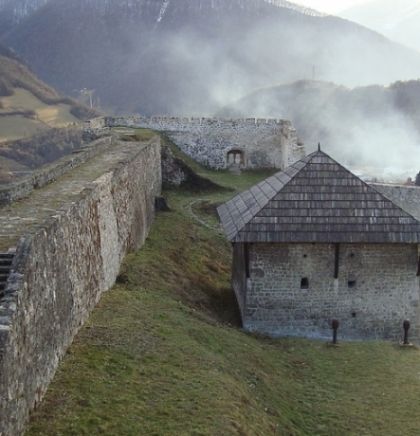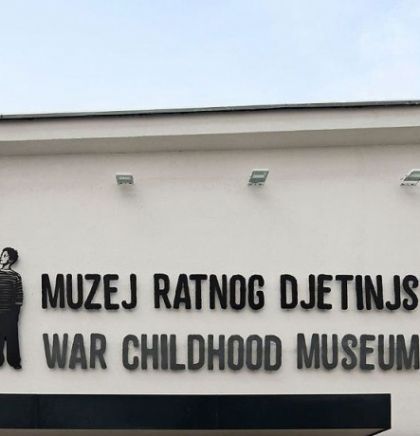10 fascinating facts about Bosnia and Herzegovina
14.09.2017 at 11:46
- Attractions
- 0
Sometimes, the darkest ghosts of the past can stretch their shadows way into the present. They certainly do in Bosnia and Herzegovina. A beautiful European country framed by craggy mountains and laced with clear rivers, it is still widely viewed as a bullet-marked bunker – if not for its involvement in the First World War (its capital Sarajevo was the tinderbox where the assassination of Archduke Franz Ferdinand in June 1914 sparked the fire), then as one of the parties to the bloody disintegration of Yugoslavia in the Nineties.
Nonetheless, this year marks a quarter-century of the modern Bosnia’s independence. Here we present 10 nuggets of information – which, perhaps, you did not know about this appealing, yet misunderstood, destination. They may also be 10 reasons to pay it a visit…
- The modern Bosnian state is a bit older than you think
There can be a tendency to regard all the Balkan states which emerged from the carcass of Yugoslavia as creations of the 21st century. Montenegro set up its own stall in 2006, Kosovo made its claim to sovereignty in 2008 (although this is yet to be confirmed). But Bosnia and Herzegovina made its giant leap into self-determination in the winter of 1992 – holding an independence referendum on March 1, and declaring the result just two days later on March 3. This did not immediately go well. Serbian objections to a UN-recognised Bosnia were one of the flashpoints which caused the appalling Bosnian War of 1992-1995 – in which genocide and human rights abuses scarred this corner of Europe.
- Bosnia was on the 14th century map as well
Once upon a time, there was a Kingdom of Bosnia. It existed from 1377 to 1463 – an era which began when this medieval realm escaped the authority of the King of Hungary, and ended when it came under the boot of the Ottoman Empire. The poster boy for this period was King Tvrtko I, who wore the crown from 1377 to 1391. A grand-standing, sword-wielding monarch, he expanded Bosnia’s territory and influence, and left his mark by founding Herceg Novi. This port is now part of Montenegro, but, pinned to the entrance of the spectacular Bay of Kotor, is worth seeing. It lies some 150 miles south of Sarajevo.
- Herzegovina is a lot smaller than Bosnia
This story comes in two chapters. Herzegovina is the shorter. The southernmost of the two regions, it makes up just 20 per cent of the landmass – but is home to Mostar, the city whose iconic bridge Stari Most became one of the symbols of the Bosnian War (built by the Ottoman Empire in the 16th century, it stood for 427 years until it was destroyed on November 9 1993. It was reconstructed just over a decade later, and reopened on July 23 2004). Bosnia, meanwhile, makes up 80 per cent of the country, and is home to Sarajevo.
- It knows its way to the seaside
The east coast of the Adriatic Sea is an international chorus line which runs Italy-Slovenia-Croatia-Montenegro-Albania-Greece, right? Well yes, pretty much. But not quite. Look at the map more closely and you will notice that Bosnia also shares in this waterfront bounty. There it is – all 12 miles of it – interrupting Croatia's charge to the south-east, around 40 miles north-west of Dubrovnik. This little continuity gap is a quirk of politics and geography – but it is enough for Bosnia to have a resort town of its own. That would be Neum, a typically pretty Balkan enclave of orange rooftops and fine beaches. If you wanted to stay here, you could book yourself into the Grand Hotel Neum– a spa retreat with double rooms for £57 per night.
- It is home to a great European river
The river spanned by the delicate arch of Mostar's Stari Most is the River Neretva. It is one of the main waterways of the Balkans, and much of it – 129 of its 143 miles – is in Bosnia and Herzegovina (the last 14 miles are in Croatia). Twisting its way down through the Dinaric Alps, it is powerful enough to support four hydro-electric power plants. These include the Jablanica Dam at Konjic, which was created in 1953, but not without controversy – the consequent Lake Jablanicko swallowed up swathes of fertile agricultural land. You can play on the river too. Neretva Rafting, also based at Konjic, takes guests dashing along the Neretva's currents, eddies and rapids (neretvarafting.com).
- Sarajevo deals in modernity
Sarajevo was severely damaged in the war – you only need to look at the infamous images of the Bosnian Parliamentary Assembly, wrapped in flames in May 1992, to know this. But the capital has been resurrected since those bleak days 25 years ago – and has embraced the 21st century. The Avaz Twist Tower is a case in point. The architectural ingenuity of this 577ft (176m) skyscraper sees it turn on itself as it climbs upwards. Built between 2006 and 2008 in the central Marijin Dvor district of the city, it rises as a bright blue emblem of the new Sarajevo, and has been hailed for its design.
- But it also remembers its struggles
For all this, the Bosnian capital was also the scene of one of European history's nastiest narratives. At 1425 days, the Siege of Sarajevo (April 5 1992 to February 29 1996) was the longest siege of a city in modern military history – lengthier even than the notorious German Siege of Leningrad (St Petersburg) in the Second World War (September 9 1941 to January 27 1944). This near-half-decade is remembered at the Sarajevo War Tunnel Museum (tunelspasa.ba), which preserves some of the underground passage to the airport through which food and supplies were sneaked to the starving residents. Only 25 of the 800 metres are accessible, but this is enough to give you an idea.
- You can drink Bosnian wine
Although much of the country's viticultural output comes from the soil of Herzegovina. Wine lovers should head in particular for the picturesque southerly city of Trebinje, which is surrounded by vineyards and independent wineries. Podrumi Vukoje 1982 (podrumivukoje1982.com) is one of them - open for tours and tastings.
- It still requires a mildly indirect journey
You cannot currently fly directly from the UK to Bosnia and Herzegovina. But the country is still within long-weekend range. You just need to change planes. Options include Austria Airlines (via Vienna; austrian.com), Croatia Airlines (via Zagreb; croatiaairlines.com) and Lufthansa (via Munich; lufthansa.com). Each flies into Sarajevo.
(source: www.telegraph.co.uk)




Comments: 0
NAPOMENA: Komentari odražavaju stavove njihovih autora, a ne nužno i stavove redakcije BHPutovanja.ba. Molimo korisnike da se suzdrže od vrijeđanja, psovanja i vulgarnog izražavanja. Redakcija zadržava pravo da obriše komentar bez najave i objašnjenja. Zbog velikog broja komentara redakcija nije dužna obrisati sve komentare koji krše pravila. Kao čitalac također prihvatate mogućnost da među komentarima mogu biti pronađeni sadržaji koji mogu biti u suprotnosti sa vašim vjerskim, moralnim i drugim načelima i uvjerenjima.
You have to sign in to leave comment.